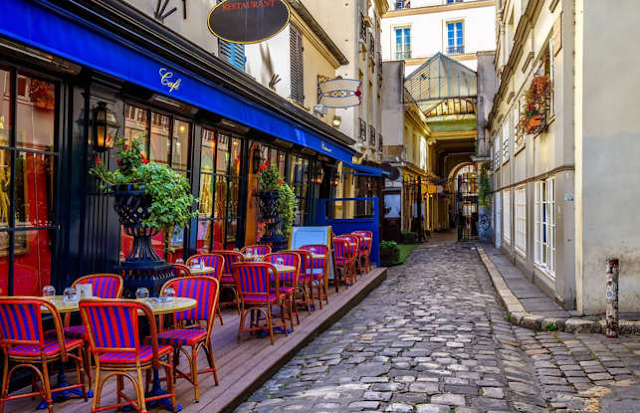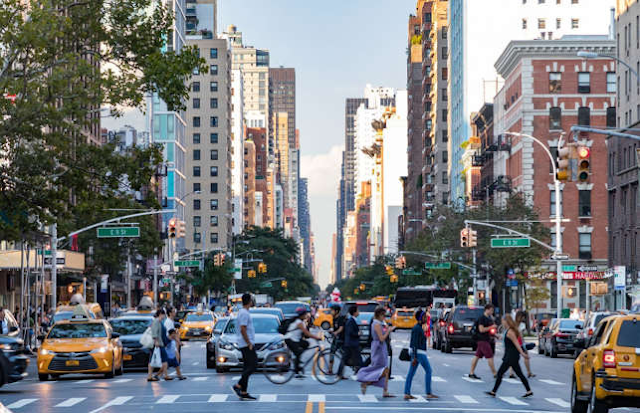Here’s How Much You Need To Be Rich In These Countries
Do you ever wonder how far your dollar would stretch if you lived somewhere else? In the following slides, you’ll see how wealth (calculated here by doubling the annual median income of each country) is measured across 20 countries worldwide, from Luxembourg to South Africa. You’ll also learn about differences in overall cost of living, like prices for dinner dates, theatre tickets and rent. Read on to see how much you need to make to be wealthy across the world (Currency conversions reflect the exchange rates at time of writing.).
According to an income survey released by Statistics Canada this year, the median after-tax income of Canadian families and unattached individuals in 2017 was $59,800. While a dollar can stretch many different ways depending on where you live, an annual income of $119,600 should set you up quite nicely in the country that has consistently ranked the top spot for quality of life in the U.S. News & World Report Best Countries survey. Unsurprisingly, the biggest expenditure in the life of a Canadian may be property -- the average house price in the Toronto area clocked in at $806,755, according to the Toronto Real Estate Board’s August report. However, transit passes, cultural activities and dining out are much less expensive than those of other world-class cities. For example, a dinner for two at a mid-range restaurant in Toronto will cost an average of $70, whereas the equivalent in New York City will run you $95.86. Besides, you just can’t put a price on good old-fashioned Canadian politeness.
In Britain,the average salary for full-time employees is £28,400, or $46,344.06 CAD. A yearly income doubling that amount would put you somewhere in the ninth decile of Britain’s highest earners, according to Her Majesty’s Treasury. Much of that wealth is concentrated around London, where the average house price is £473,822 ($773,044.04 CAD). A 20% sales tax rate in the UK makes all items even dearer. But when it comes to world-class theatre, the West End has Broadway beat: The average cost for a ticket to a West End show is £46.71 ($76.23 CAD), while a ticket on Broadway is well over $100 USD ($132.39 CAD).
In its 2019 Worldwide Cost of Living Survey, The Economist declared a three-way tie for the most expensive city to live in, splitting the honour between Hong Kong, Singapore and Paris. Indeed, Gay Paree, the city of lights and birthplace of haute couture isn’t as amenable to destitute artists as it once was: According to Expatistan, which compares cost of living standards across the world, monthly rent for a 900-square-foot furnished apartment in a standard area now costs roughly €2,230 ($3,256.78 CAD) and a pint of beer at a local pub costs about €7 ($10.22 CAD). However, life gets considerably cheaper in other parts of France: In Marseille, the second largest city in France after Paris, the cost of living is 23% cheaper.
According to the Federal Reserve Economic Data, the median household income in the U.S. is $61,372, higher than the global average - however, the country has a significant wealth gap, with the top 20% of the population earning nearly nine times as much as the bottom 20%. Even state lines impact one’s earning potential: the median income in West Virginia is $43,469 while that of neighbouring Washington, DC, is $82,372. Generally, housing costs will vary city to city. In New York City, the average cost of rent for a one-bedroom apartment is a whopping $3,132.63 USD ($4,140.27 CAD), and a monthly transit pass costs $127 USD ($167.97 CAD) - but if you have the cash, it’s a fair sum to pay to be at the historic epicentre of culture.
It’s a good time to be in Norway: over the last few decades, the country has undergone rapid economic growth due to its natural resources in the oil and gas sector and aggressive government investments. There’s also very little wealth disparity, which benefits young people greatly compared to other countries. However, its position as one of the richest countries in the world also means it is one of the most expensive: According to the New York Times, in March 2018 the average price per square foot in Norway’s highly competitive housing market was about kr 3,825 ($748.42 CAD) per square foot. As for daily expenses, a casual dinner for two at a local pub costs kr 575 ($84 CAD) and even a decent bottle of red table wine will run you kr 171 ($25 CAD)
Generally, income in Dubai range widely, but the average monthly salary of a person working in Dubai is AED18,248.60 ($4,028.80 CAD), according to the UAE Ministry of Economy. The country is known for being an expat-friendly, oil-rich haven full of luxury cars and exotic pets, but the day-to-day cost of living is marginally lower than cities like New York and London. Rent for a nice two-bedroom apartment in Dubai starts at about AED 100,000 annually ($36,004.76 CAD), and a three-course meal at a mid-range restaurant costs about AED365 ($130,81 CAD). However, with no tax on salaries and a 5% sales tax, what you earn is yours to keep.
Turns out you don’t need to be crazy rich to live in the land of Crazy Rich Asians - in fact, the median monthly income for full-time employed residents in Singapore is $4,056 SGD ($3,876.85 CAD). But it does help if you make more than that, if only to compete with the reportedly 184,737 millionaires who live in this small Asian city-state. People who can afford to own a home do need to have achieved millionaire status - the average price per square foot for a home ranges from S$400 to S$2,000 ($382.31 - $1,911.55 CAD), and a simple bungalow now costs an average of S$10,600,000 ($10,131,225.61 CAD).
According to data from the OECD Better Life Index, residents of Mexico earn about $15,314 USD per year ($20,258 CAD), the lowest of the OECD countries. The comparatively low cost of living, vibrant culture and warm weather makes Mexico an appealing destination for many retirees and expats. This is true particularly along the coast in resort areas and in tourist-friendly areas like Los Cabos or San Miguel de Allende, where a palatial 8,760-square-foot villa on a quarter-acre lot can be had for $2,775,000 USD ($3,671,186.25 CAD). But for a more modest stay, rent for a furnished two-bedroom home can cost as little as $750 USD per month ($992.06 CAD).
Who hasn’t dreamt of packing up their all their possessions and setting off to Italy to get a bite of la dolce vita? Well, being rich in Italia is actually comparatively more attainable than it is in Canada and the United States, at least when it comes to dollars in the bank - the average income in Italy is €24,094 ($35,163.27 CAD). Italy boasts free healthcare, easy access to cheap and local in-season produce, and relatively affordable rent - at the highest end of the scale in Milan, a one-bedroom apartment in the city centre will cost roughly €1,200 ($1,751.81 CAD), which is much less than its equivalent in a similarly stylish locale elsewhere.
In the run-up to the Tokyo summer Olympics, many people have Japan on their minds. It’s the country known equally for its booming, frenetic megalopolis of Tokyo and for the still, serene zen gardens of Kyoto. In terms of cost of living, Tokyo is up there with New York and London - a 900-square-foot apartment in an average area is about ¥148,848 ($1,855 CAD) and a monthly transit pass is ¥17,300 ($213.92 CAD).
One of the most developed countries in Europe, Sweden is a highly desirable country. Their employment rates remain consistently high, yet only 1% of employees report to work very long hours, according to the OECD Better Life Index. According to Expat Arrivals, residents spend about 30% of their income on housing, which can cost up to 15,500 SEK ($2,116.50 CAD) in the city centre. But where you might feel the pinch of Sweden’s high living costs is in taxes: the sales tax rate is 25%, and personal income tax rate is 61.85%.
Known for its dramatic views of the northern lights, volcanoes and other natural phenomena, Iceland is a popular travel destination for globetrotters across the world. The country as a whole is on the forefront of environmentalism and is primarily powered by clean, renewable sources that lend themselves to low utility costs. However, everything else costs considerably more than most places in the world: The rental market is highly competitive, with the average one-bedroom apartment in Reykjavik costing 188,000 ISK ($1,965.28 CAD), and taxes are high, with a 24% sales tax rate and a 46.30% income tax rate. Due to its cold climate, much of Iceland’s produce is also imported from elsewhere. However, this high cost of living is reflected in income: According to data from Statistics Iceland, the average monthly income of Icelanders in 2017 was 534,000 ISK ($4,481.90 CAD).
There’s a lot of wealth in this tiny country: Of just over half a million residents, 44.5% came from other countries as of 2013, according to Statistics Luxembourg. As banking constitutes their largest financial services sector, it’s no surprise that living in Luxembourg can be quite luxe if you’re not careful. According to the Grand Duchy of Luxembourg, renting a one-bedroom apartment will cost around €1,400 ($1,038.10 CAD), but daily costs for items like beer at a bar (€2.50 or $2.64 CAD) or a movie ticket (€8.3 or $12.09 CAD) are similar or cheaper to that of other European cities.
























Comments
Post a Comment
thanks for your message.